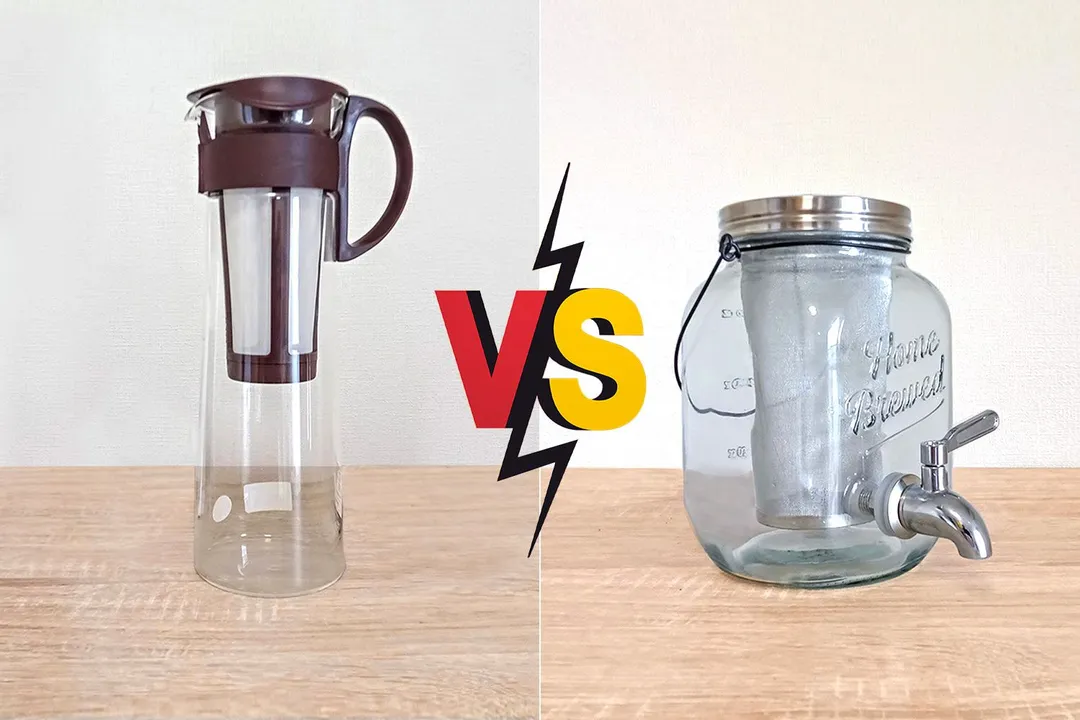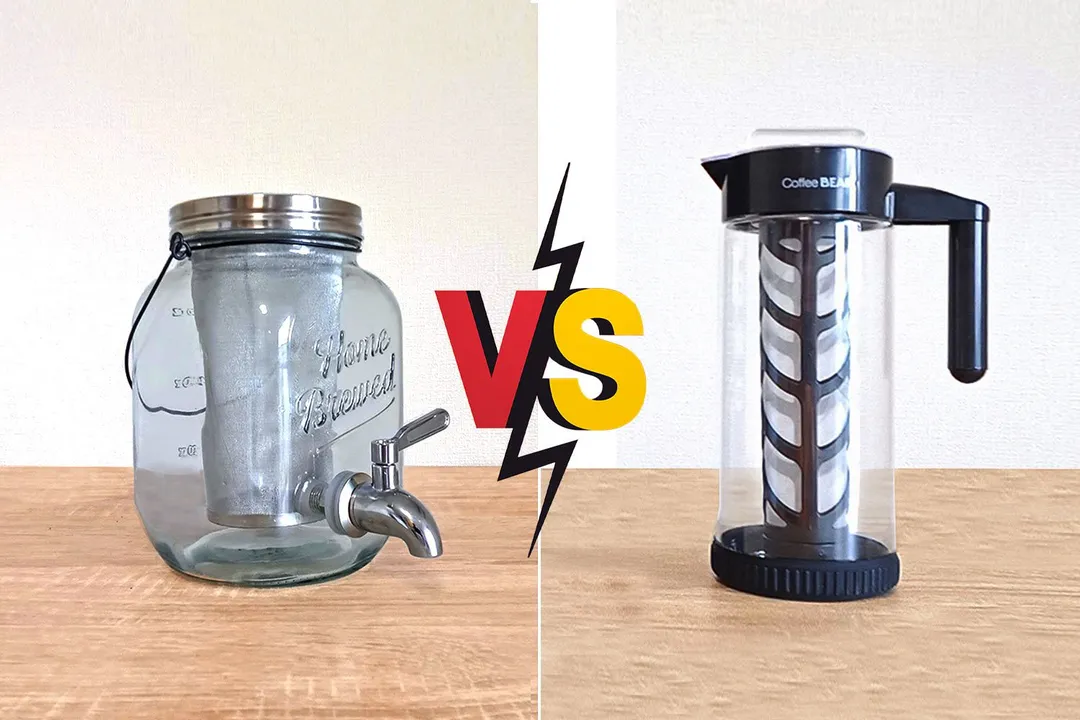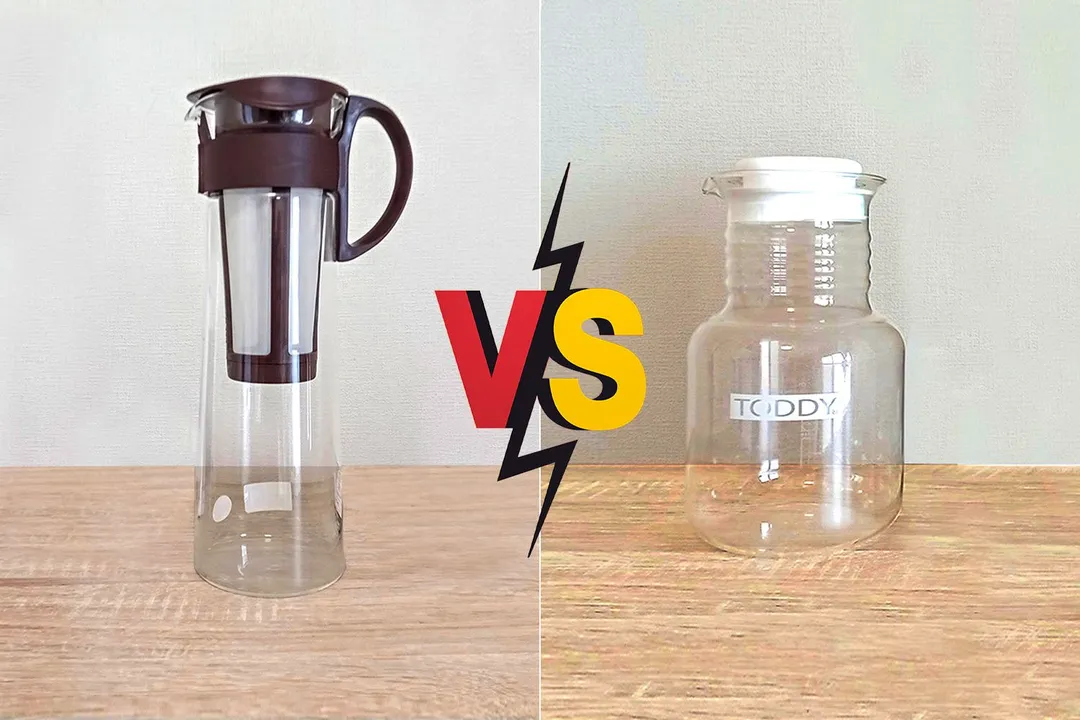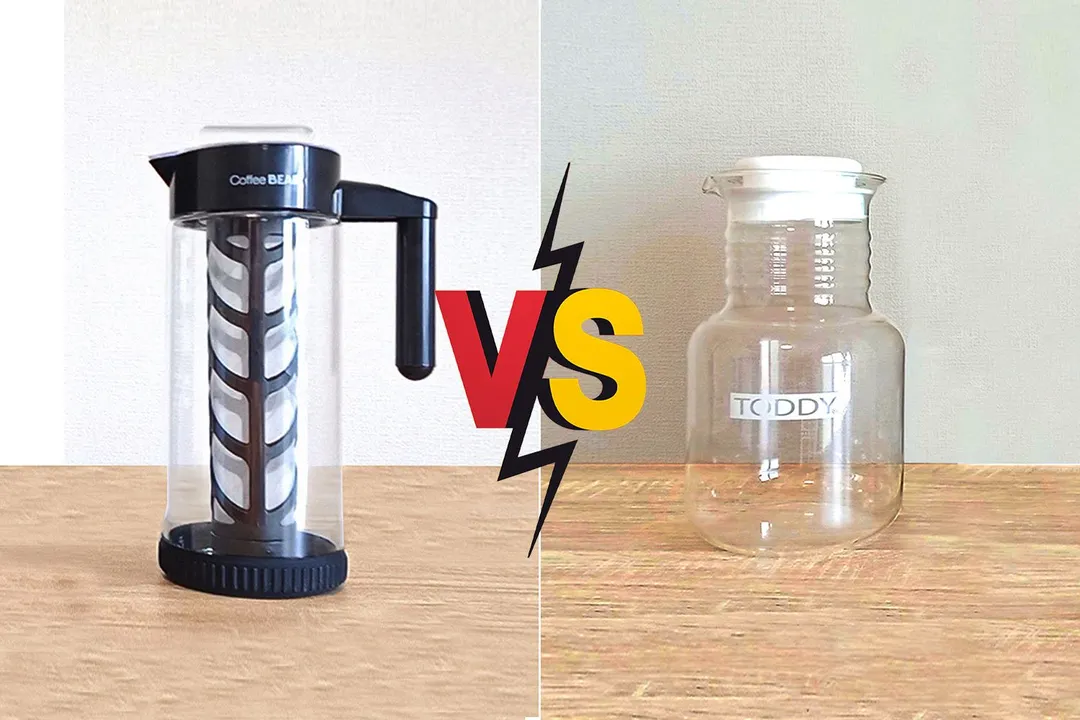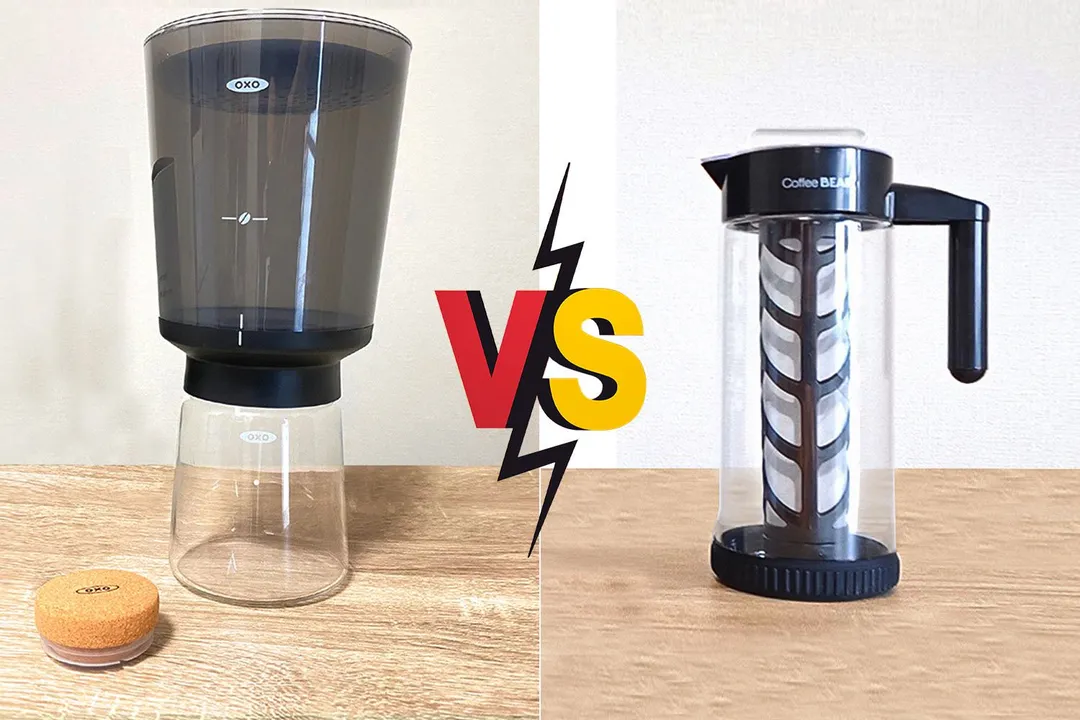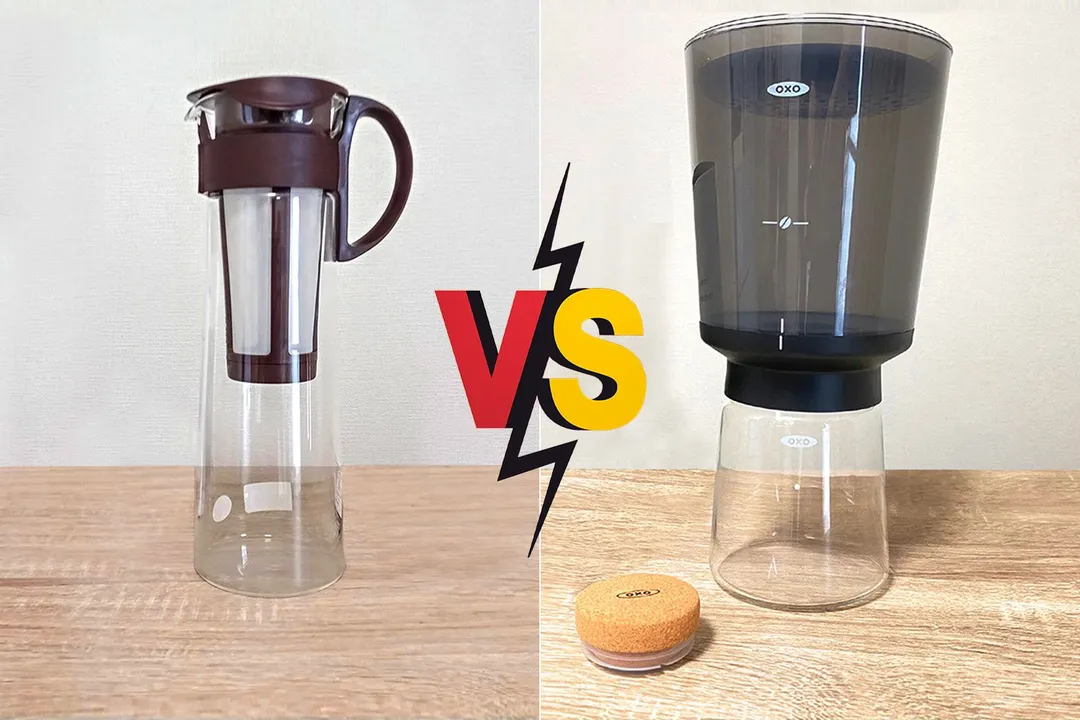Our recommendations are made independently through Research & Testing. We may receive commissions from purchases made via our links.
Hario Mizudashi vs Coffee Bear Side-by-Side Comparison
Hario Mizudashi cold brew coffee maker vs Coffee Bear. A brewer we don’t recommend and one that just makes the grade.
Hario Mizudashi
Tested Using Methodology v1.0Coffee Bear
Tested Using Methodology v1.0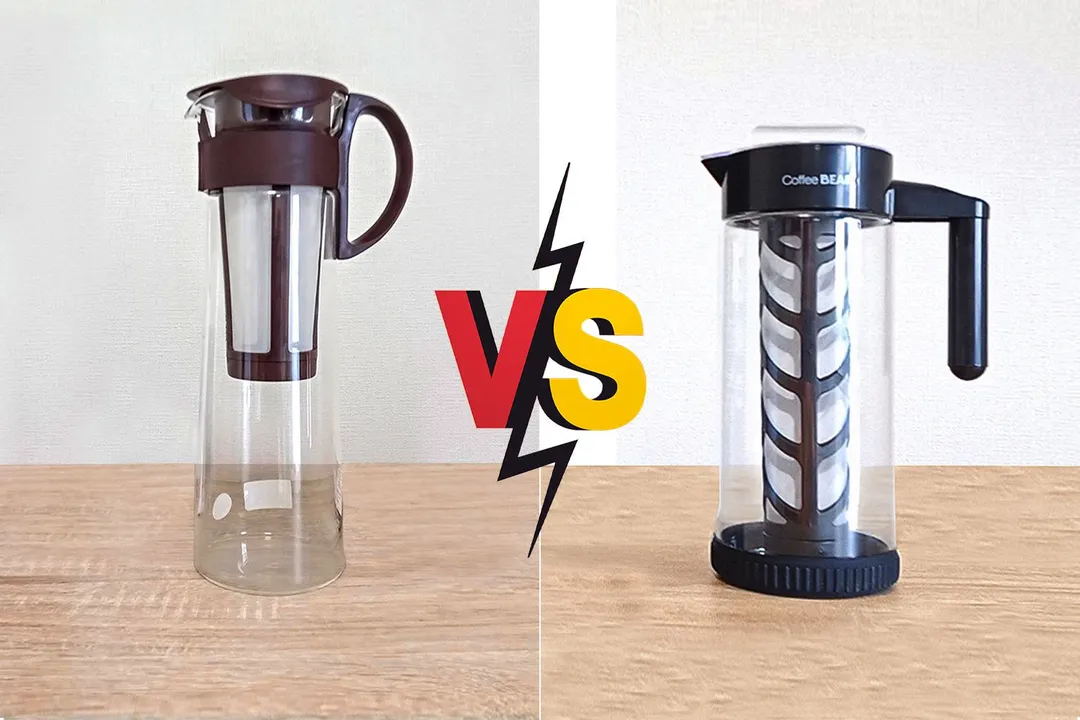
Overall Verdict
The Hario Mizudashi, due to its poor design and brew quality, is a brewer we do not recommend. The Coffee Bear is an average performer but not without its own design issues.
For the Coffee Bear, the plastic and nylon filter is not the best. It’s a little too fine thus limiting the cross-flow needed for a good brew to develop. Design-wise, it tries to offer more value with a silicone base stand but it’s poorly designed with an unbalanced feel.
Likewise, the Hario Mizudashi has a nylon and plastic filter. Additionally, the brew ratio is insubstantial, the filter too short, and the vessel not airtight. The Hario is a better fit for a small refrigerator door bin, however, there are other small brewers that do a much better job.
Pros & Cons
- Attractive brew decanter
- Easy-to-clean filter
- Color choice
- Hot or cold brewing
- Glass decanter
- Lid design
- Twist to pour
- Not airtight
- Odor contamination
- Poor brew quality
- Silicone base not top quality
- Handle not so comfortable
- Appears to be a generic copy
Key Specs
Where to Buy
*You help support HealthyKitchen101's product testing and reviews by purchasing from our retail partners.
Analysis and Test Results
Brew Quality
Bouquet
Drinkability

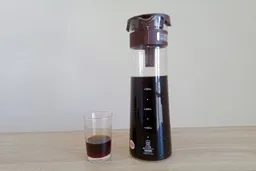
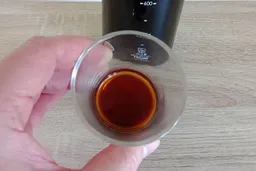

Sediment
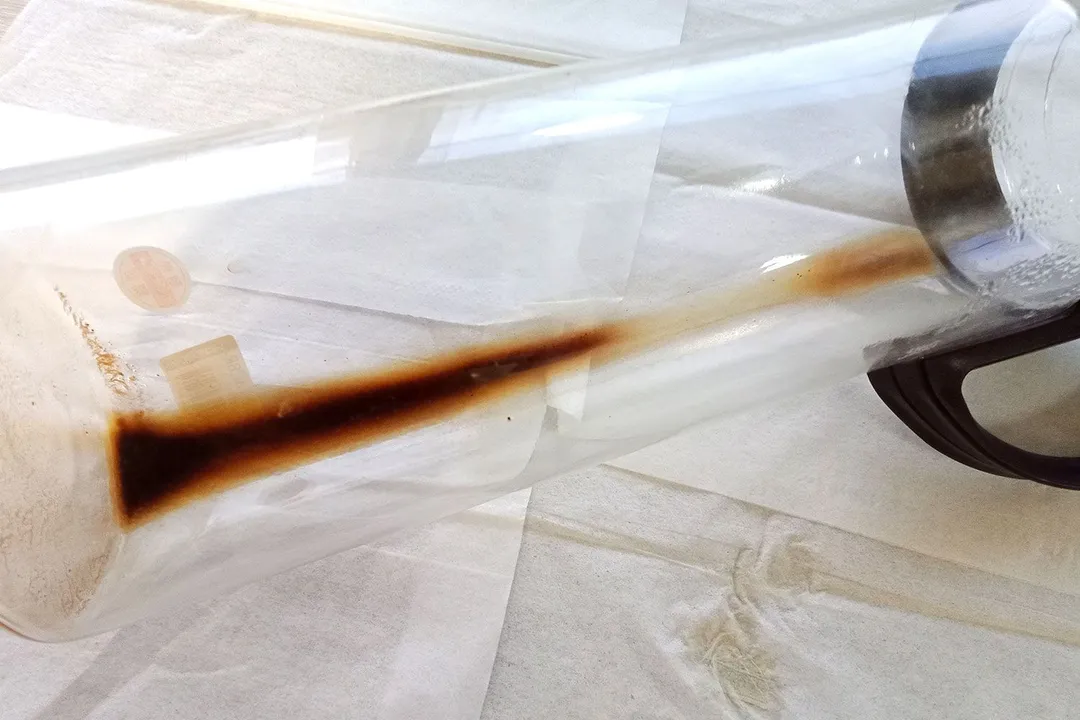
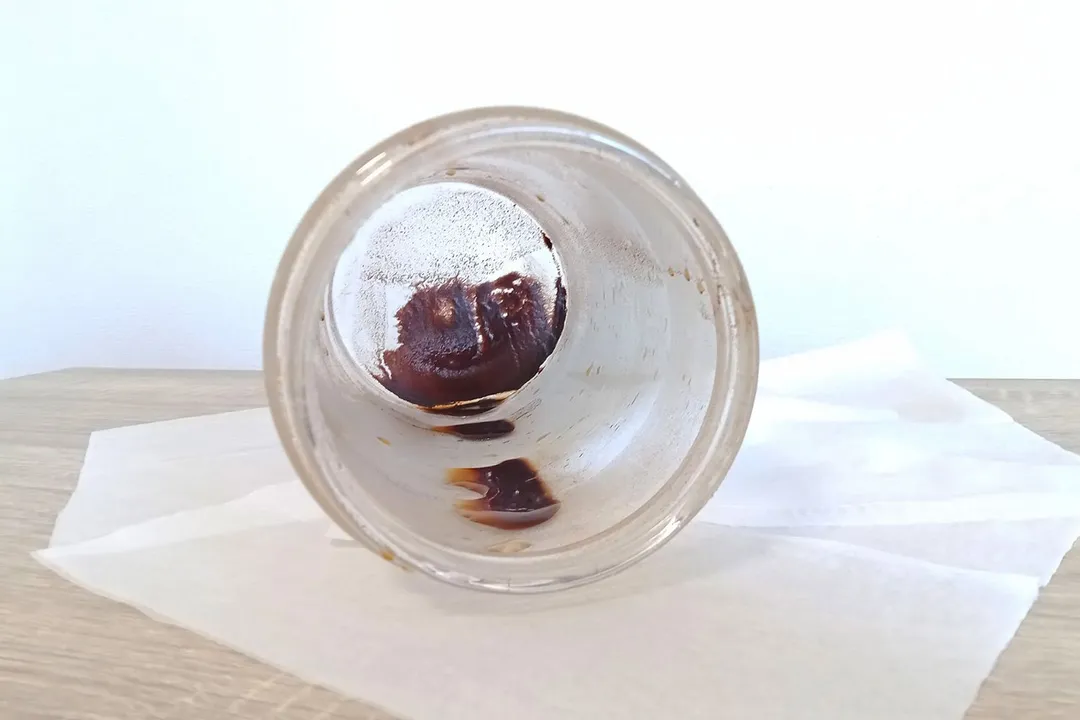
Design
In the Box
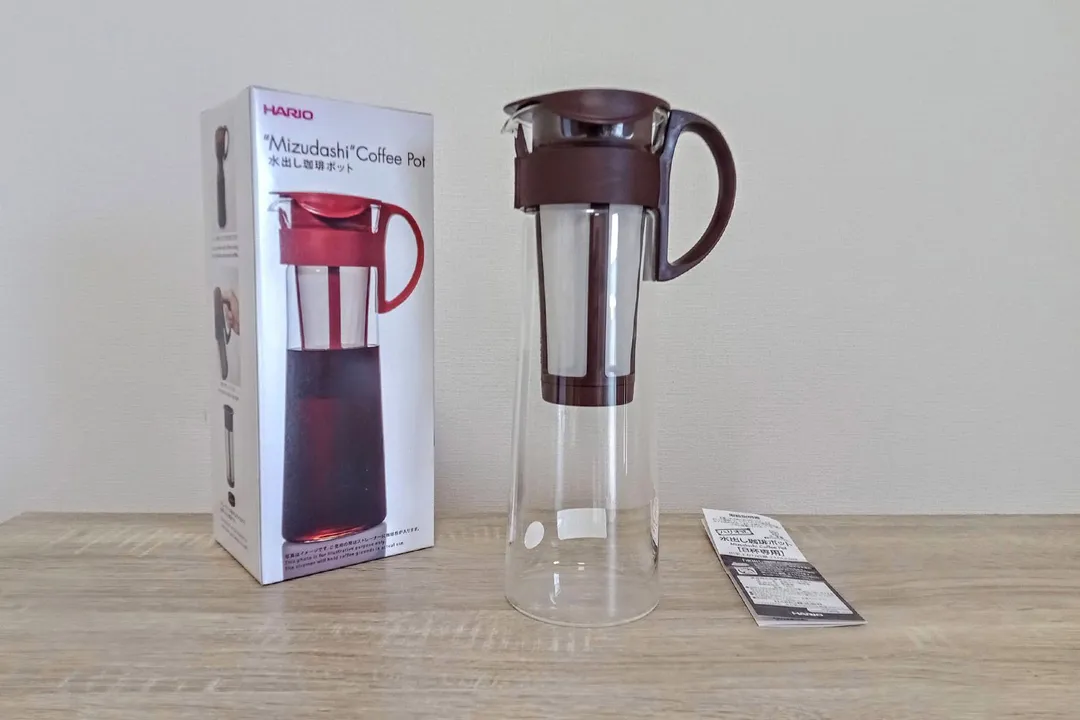
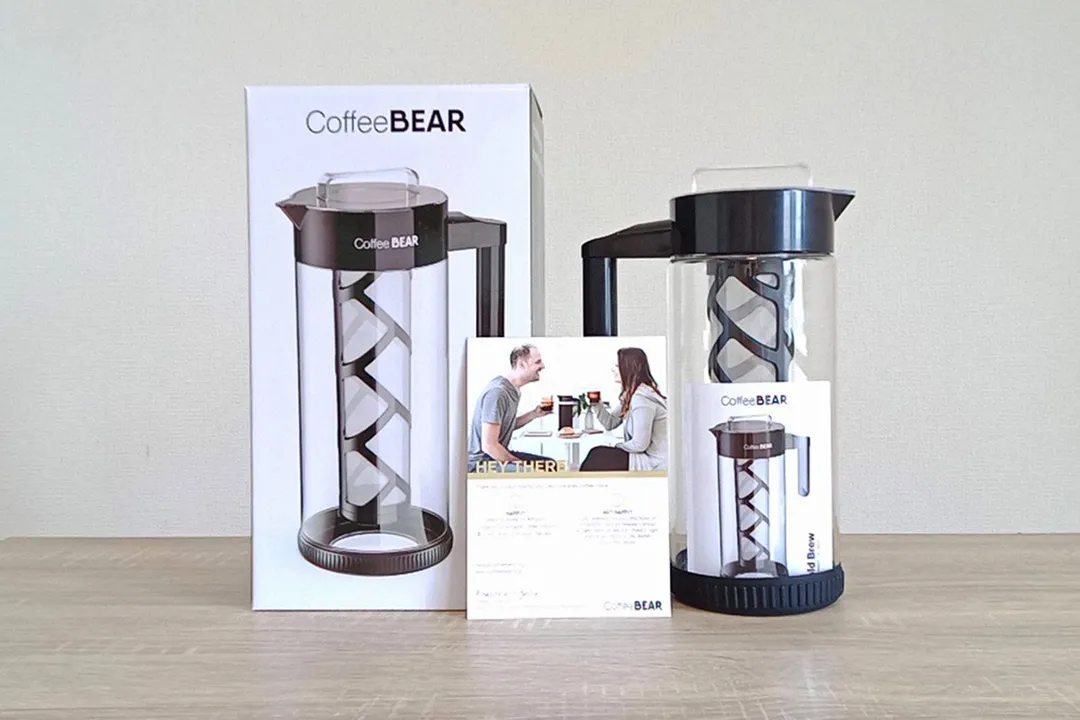
Decanter

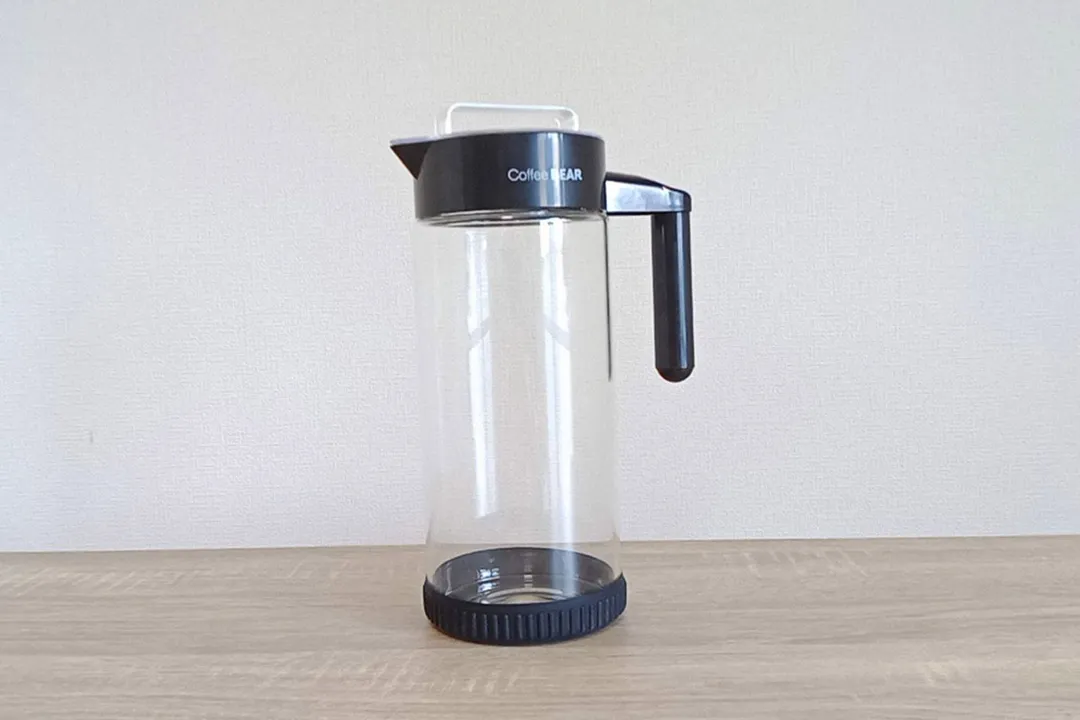
Stopper / Lid
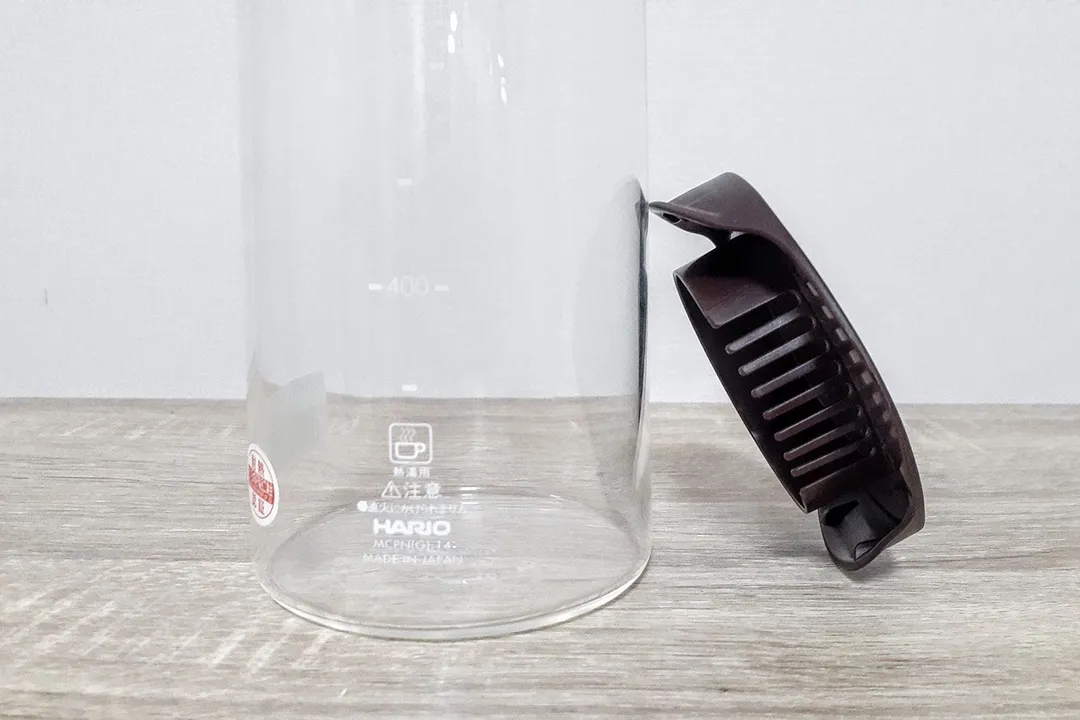
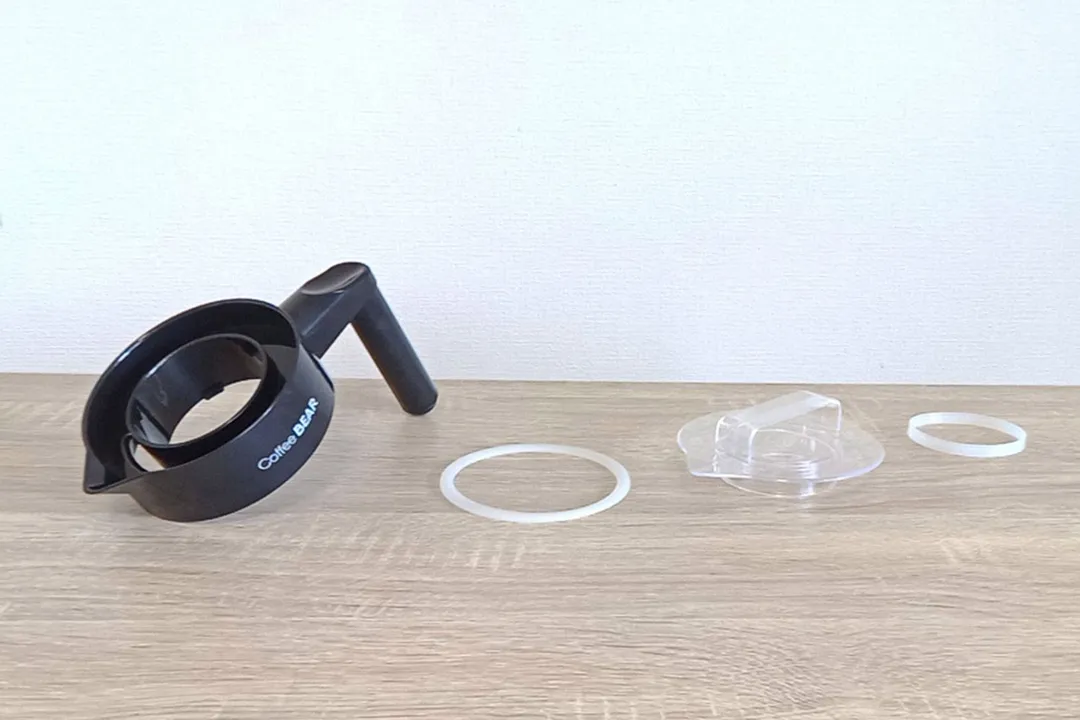
Filter
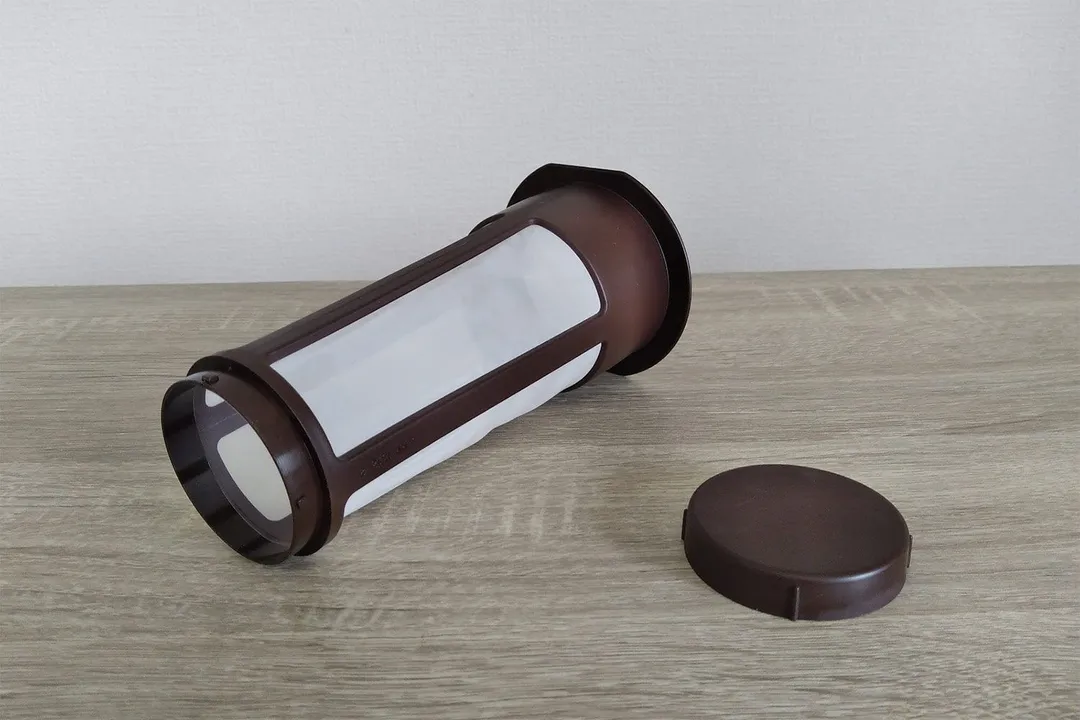
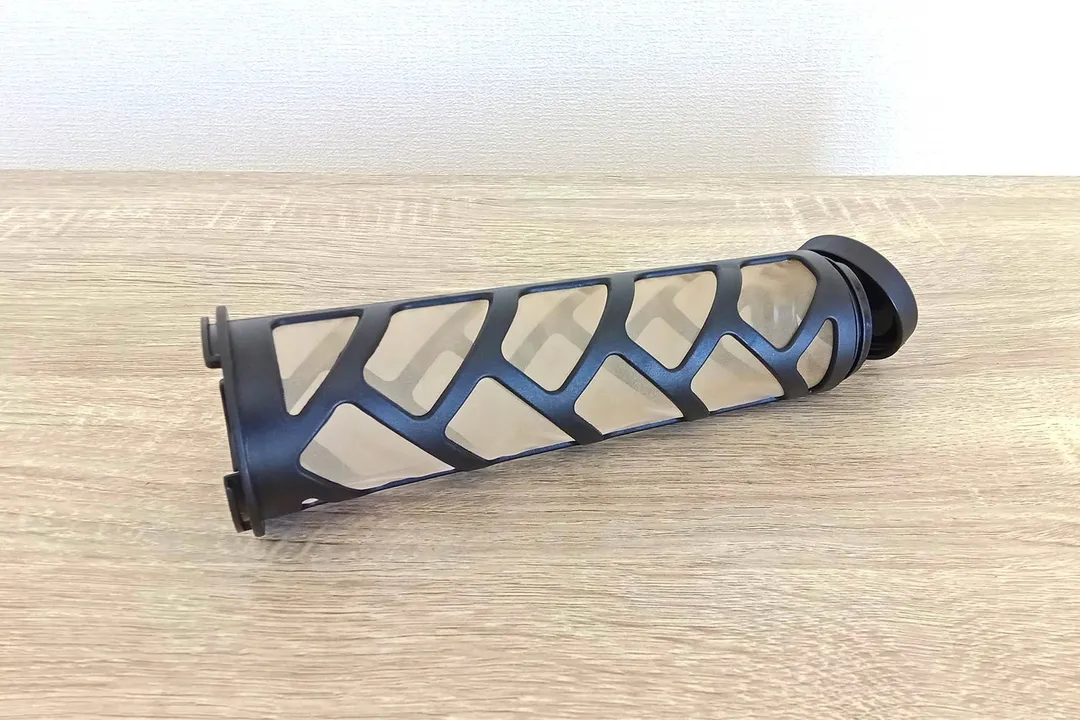
Build Quality
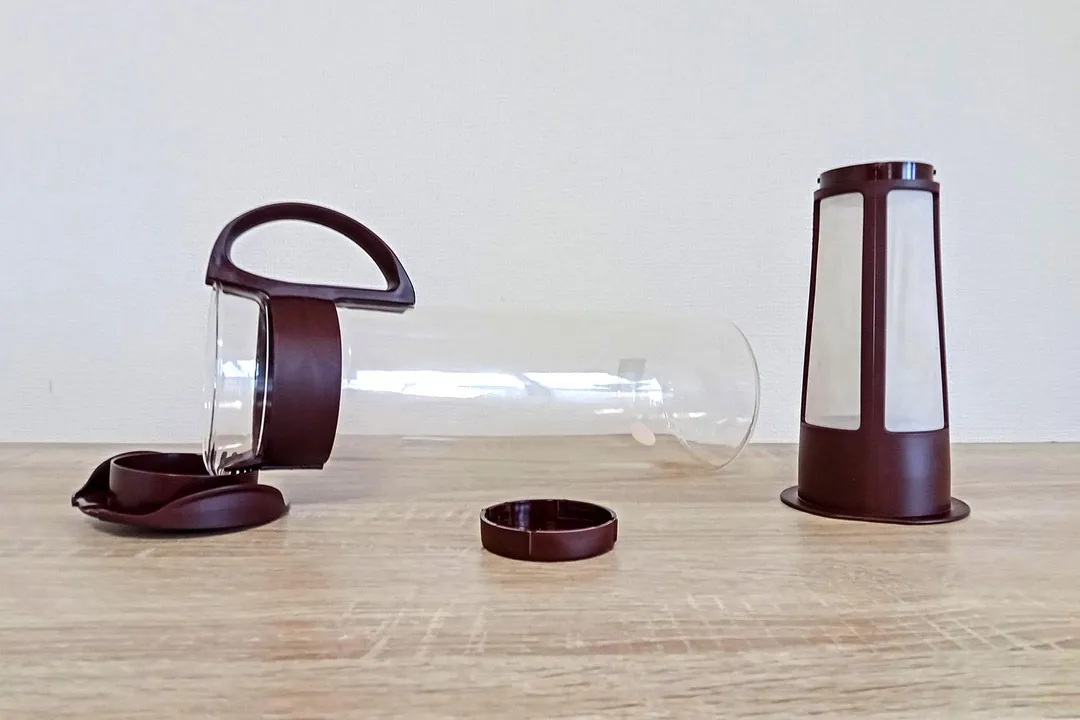

Usability
Brewing
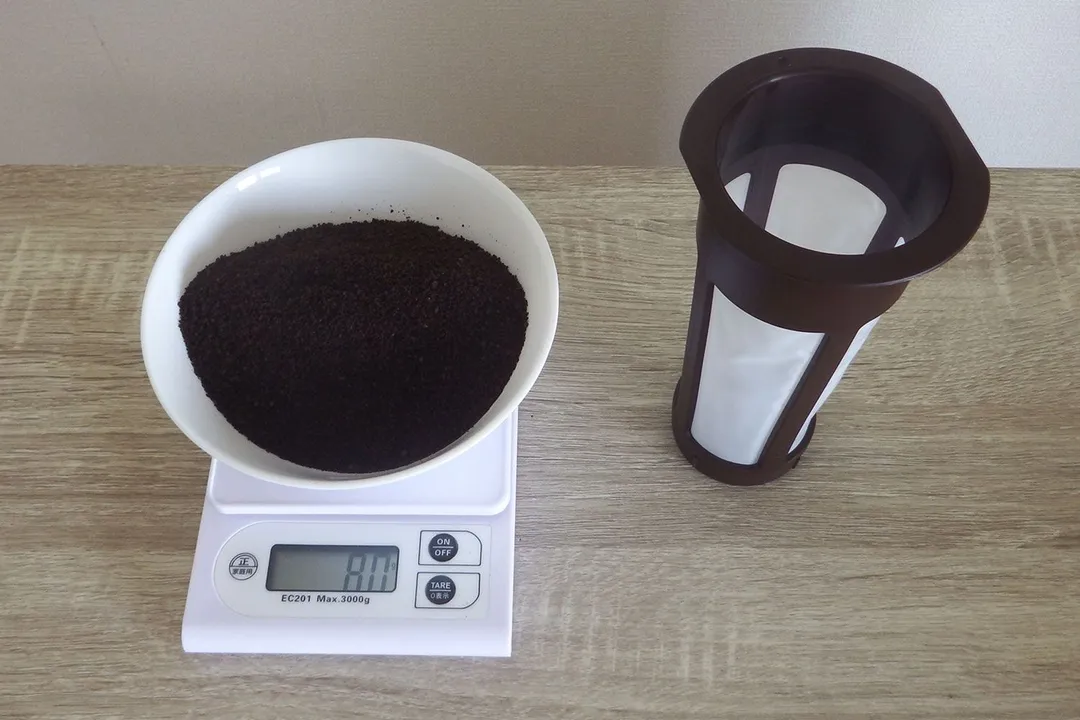
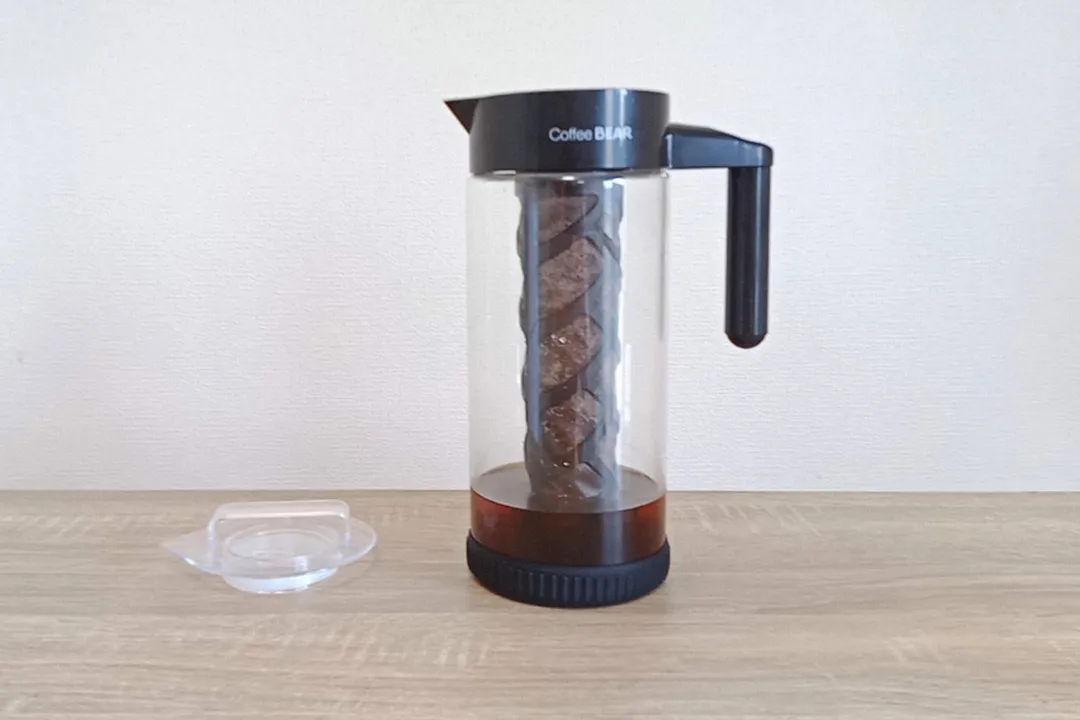
Decanting
Cleaning and Storage
Behind the Comparison
Roger Shitaki is a writer, author, and editor. His niches are household appliances, health & wellness, and travel. He’s a freelance contributor to a Tokyo lifestyle website and a leading ophthalmology magazine in Asia.

